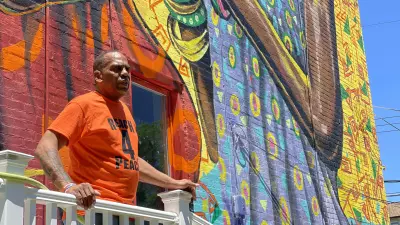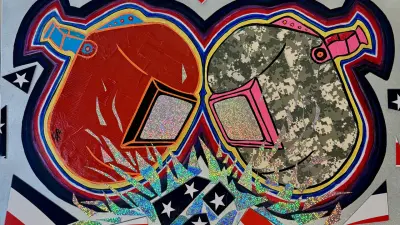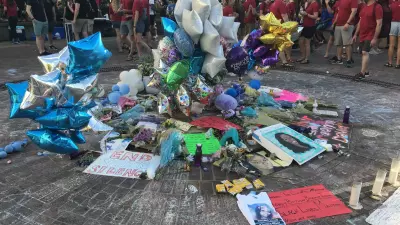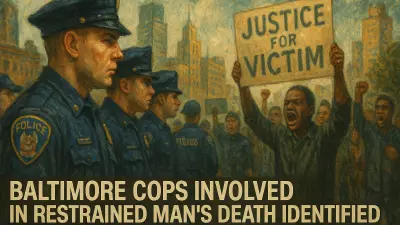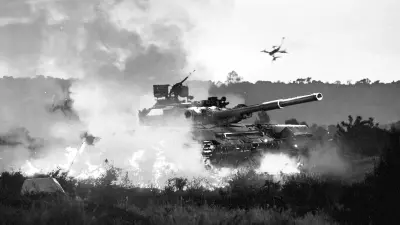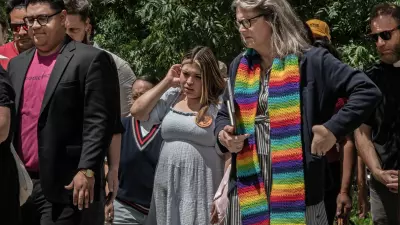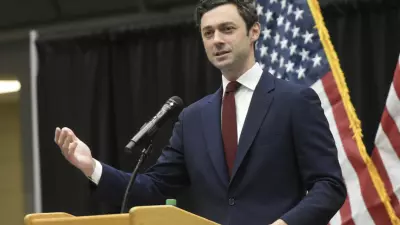Summertime can be tough on Deja Garner, who has trouble falling asleep during the warmer months for fear of being jolted awake by gunshots.

Garner, 28, a lifelong Milwaukee resident and former teacher’s aide, can count more than 20 people she knew personally whose young lives were cut short by gun violence. She has mourned friends, relatives, students she mentored and youth basketball players she coached — including 14-year-old Demetrius Thomas and 16-year-old Tera Agee, both killed in an April 2020 domestic dispute-spurred massacre that left five people dead and a single 3-year-old survivor inside their family’s home.
“I had a friend who was shot and killed on a basketball court because the person he was playing against lost and got upset and wanted to fight, and instead of it being a physical fight, guns were brought out,” said Garner, director of equity and outreach at the Wisconsin Anti-Violence Effort Educational Fund, a statewide advocacy and education group.
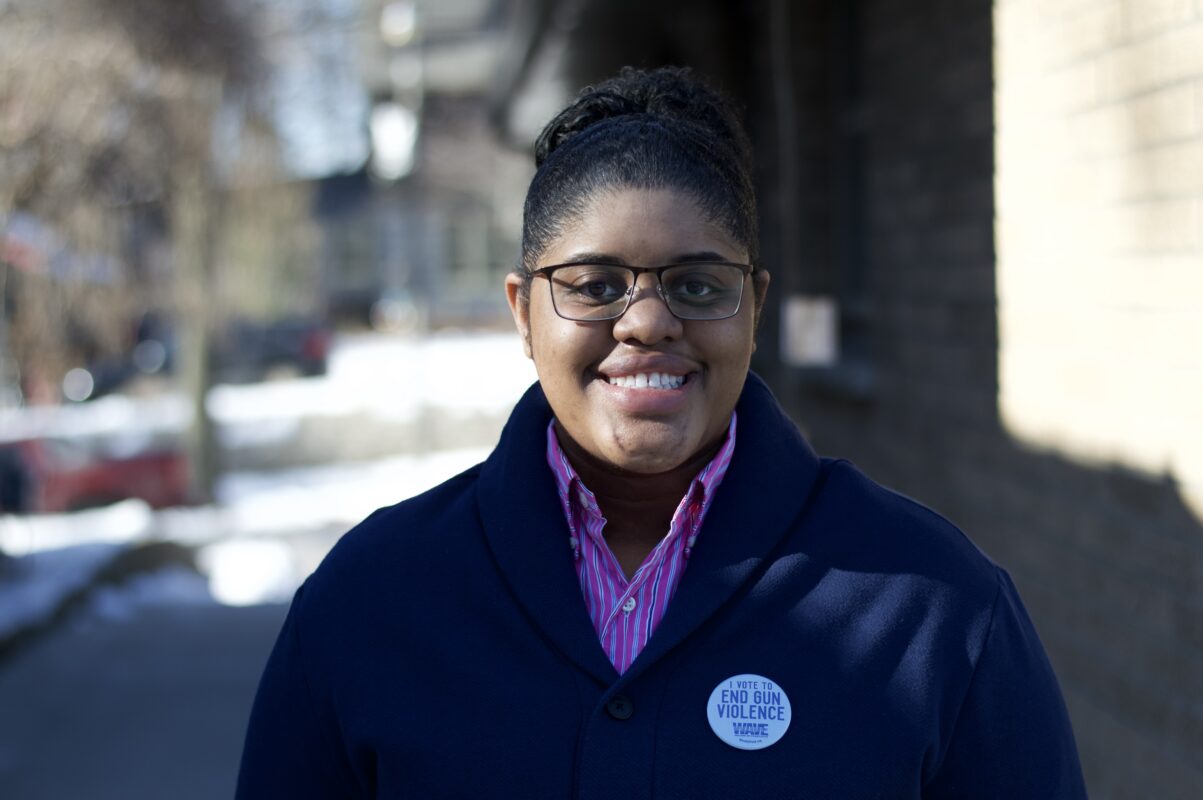
“I’ve had friends who were robbed and killed walking down the street. I’ve had friends who were shot on their front porches trying to go into their front doors,” she said.
More than once, she has felt the terror of narrowly missing being struck by a stray bullet.
“Just a few feet over, and I could’ve been a victim,” said Garner, who still makes time for therapy and healing from her own trauma, in addition to her advocacy work. “It kind of has followed me throughout my life. It’s super eerie for me to think that I may have heard the last moments of some of my friends’ lives.”
Gun violence as a public health crisis
As shootings and gun sales surge nationwide, Garner is bracing for what could be an especially brutal summer.
Shootings already have topped 350 in 2022 — a 73 percent increase from the 207 logged over the same period in 2020, according to police.
Similarly, alarming upticks in gun-involved homicides, accidents, and suicides are happening in large cities nationwide — particularly among kids and young adults.
As the pandemic raged in 2020, before vaccines became available, Americans under 30 years old were nearly 10 times more likely to die in a shooting than from COVID-19, reports the Johns Hopkins Center for Gun Violence Solutions. That year, 4,357 minors were killed in shootings.
And though hotter weather often correlates with spikes in shootings, Garner and fellow advocates are encouraged by another trend: signs that gun violence is being taken more seriously by experts, researchers and municipal leaders as a public health crisis.
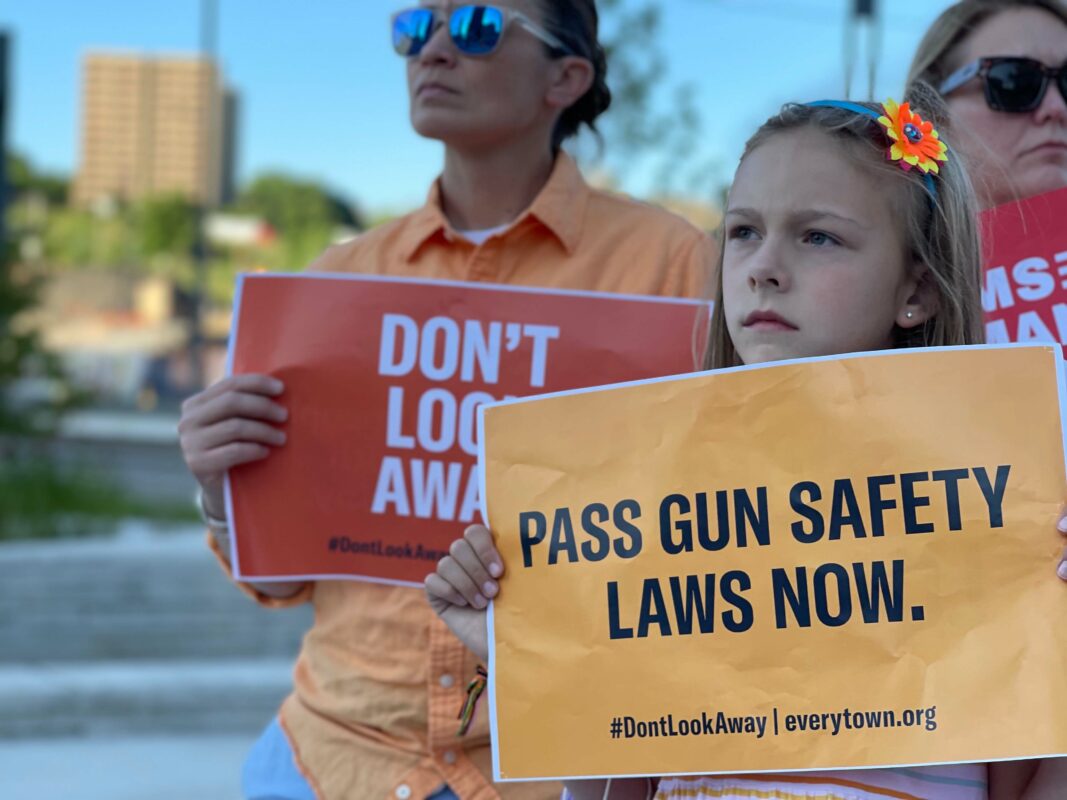
“A lot of epidemiologists and people who have been studying gun violence have not only started to look at it from a public health lens, but they’ve also started to call gun violence a disease — or a symptom of a greater issue,” Garner said. “Even when we look at survivors of gun violence, people who have been injured by guns, that’s a public health issue, because their lives more often than not are never the same.”
The public health approach confronts gun violence not merely through a criminal or punitive lens, but as an infectious plague on communities that requires coordinated interventions to stop it from spreading and claiming more lives.
“Friends and family get involved and it expands just like a disease,” said Ross Watson, director of the Allegheny County Office of Violence Prevention in Western Pennsylvania. “The goal is to stop it at the head before it can fester and evolve out into more violence.”
Among solution-oriented efforts gaining momentum:
- Trained “violence interrupters” who are visible and active daily in specific neighborhoods – thwarting retaliation, “keeping the peace” at post-shooting funerals and empowering individuals to make good choices;
- Hospital interventions that connect patients who have been shot with social workers and resources such as jobs, housing, mental health care and education; and
- Newly-created government hubs for coordinating violence intervention that are distinct from traditional municipal police and public safety arms.
More money, resources, and manpower are being pumped into large and small cities, with nascent research pointing to pockets of success in reducing homicide and gun injury rates everywhere from Richmond, Calif.; to Birmingham, Ala.; to Nashville, Tenn.
In Pennsylvania, Gov. Tom Wolf devoted more than $23 million in newly available grants toward anti-violence efforts this year, using some of the extra money doled out by the pandemic-spurred economic relief package. The National Institutes of Health committed $25 million toward public health research on gun violence, among the biggest such investments in decades.
Chicago Mayor Lori Lightfoot is advancing her “Our City, Our Safety” initiative measuring disparities in gun violence. Milwaukee Mayor Cavalier Johnson and Pittsburgh Mayor Ed Gainey are touting their revamped “Blueprints for Peace.”
“Cities are looking really closely at where gun violence is happening to help draw the resources to those places that are most impacted,” said Nina Vinik, a longtime policy researcher and founder and executive director of Project Unloaded, which focuses on educating youths about the dangers of guns at early ages. “Young people tend to be more impulsive, and we want them to think and understand the implications of a decision to bring a gun into their lives, into their communities, before they make what could be a deadly decision.”
More than 35 municipalities run such departments and share best practices as part of the National Offices of Violence Prevention Network, formed last year by the Oakland, Calif.-based Project for the National Institute of Justice Reform. Such programs they fund lean heavily on longtime community leaders and local residents to thwart violence by targeting the communities where it happens most.
“They have to be from those communities and [to] have lived in those communities to understand how those communities operate,” Watson said. “Because they know them, they trust them. They have to trust you. It’s all about the relationships.”
Targeting at-risk kids, areas
Mass shootings in the likes of Uvalde, Texas, and Buffalo, N.Y., get a lot of national press, but gun violence more often is concentrated on a tiny fraction of areas – typically those places more impacted by poverty, joblessness, housing crises, mental health, generational violence, and trauma, research shows.
“It is really important not only to recognize some of the more sensationalized events,” said Garner, “but also the ones that happen in people’s backyards every night.”
Shootings also disproportionately affect people of color, living in poverty and suffering through generational cycles of trauma and hostile environments. Black men ages 15 to 34 are 20 times more likely to be a victim of a deadly shooting than their white peers, according to federal Centers for Disease Control and Prevention data analyzed by Johns Hopkins researchers in a report published in April.
In Allegheny County — which encompasses the city of Pittsburgh and 129 smaller municipalities totaling more than 1.2 million people — at least 26 of the 44 people killed by homicide last year were age 30 or younger.
Sixty-five percent of those killed by homicide were Black males, county data show.
“Policing alone is not going to solve the issue,” said Rachael Eisenberger, senior director of criminal justice reform at the Center for American Progress, a left-leaning think tank in Washington. “You really need to give people meaningful alternatives, to engage people and to provide services and supports that are needed for people to change their lives.”
Defusing tempers, thwarting retaliation
Allegheny County’s Office of Violence Prevention uses the Chicago-based Cure Violence model, which focuses on how a small percentage of people in certain environments are typically responsible for most violent incidents.
Violence interrupters assigned to neighborhoods and school communities spend the bulk of their days being visible and making connections with youths at risk for violence. They respond to any shooting incident within 48 hours to learn what transpired and stay connected not only to victims but also their family members and friends to defuse tempers and deter them from escalating already hostile situations.
“So, if there was a fight on Sunday night, they’re going to be in the schools Monday to make sure that those fights don’t lead to shootings or homicides,” Watson said. “Other days, they’re on the corner talking to at-risk individuals, being just vested into whatever is going on.”
The office was born out of a $500,000 grant from The Heinz Endowments, among the nation’s largest private foundations. What started as a one-man contract position in 2016 has grown into an eight-staff operation, and is looking to hire three more individuals, according to Watson.
The county’s anti-violence hub is forming an 18-member youth advisory board and partnering with more schools and health care providers, such as Children’s Hospital of UPMC in Pittsburgh. The goal is to expand beyond its five initial target areas: Wilkinsburg, Turtle Creek, Braddock, North Braddock and East Pittsburgh.
“Just because something happens on the North Side doesn’t mean it won’t affect the Mon Valley or something in the city of Pittsburgh affecting outside of the city,” Watson said.
“Because violence doesn’t have boundaries.”

